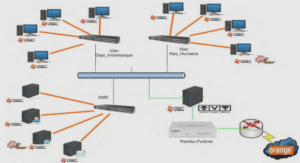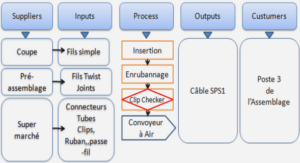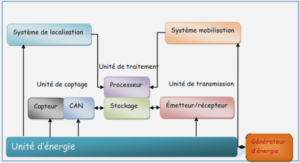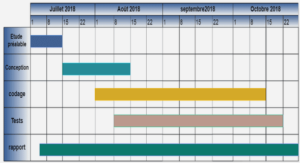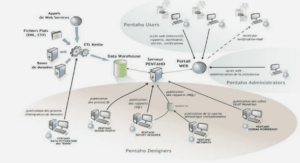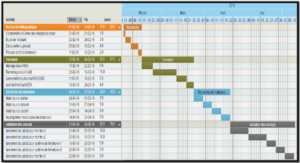Treatment and prevention HIV-l infection
To this date, neither a cure nor a vaccine effective against HIV -1 have been developed. There are multiple obstacles in developing safe, effective and durable vaccines, including the fast mutation rate of the virus and high glycosylation of its spike proteins, which unables immune system detection of viral epitopes. Oruy one trial, RV144, consisting of two vaccines that individually shown no efficacy, resulted in a moderate, ~30%, protection (Rerks-Ngann et al, 2009). This study suggests that developing an effective vaccine could be feasible in the future. The frrst drug effective against HIV-l azidothymidine (AZT) was introduced in 1987. (Yarchoan & Broder, 1987). This drug is now classified as nucleoside/nucleotide reverse transcriptase inhibitor (NRTI). NRTIs are nucleoside analogues. that resemble naturally occurring nucleosides and are incorporated into nascent DNA by viral reverse transcriptase but not human polymerases. AZT, which was initially used as monotherapy, quickly resulted in the emergence of drug-resistant virus es and subsequent failure of the treatment. Between 1991 and 1995, four additional NRTIs were developed.
A breakthrough came in 1995 when a new protease inhibitor (PI, saquinavir) was introduced, which led to the CUITent approach of combining multiple antiretroviral drugs targeting various steps of the viral replication cycle, known as highly active antiretroviral therapy (HAART) (Flepp et al, 2001). In 1996 nevirapine, a drug belonging to a new class of pharmaceuticals, was introduced, along with two additional PIs. Nevirapine is a non-nucleoside reverse transcriptase inhibitors (NNRTI) and acts directly on the reverse transcriptase. In 2003, the frrst fusion inhibitor was introduced (enfuvirtide), and in 2007 inhibitors of entry (maraviroc) and integrase (raIte gravir) were approved (palmisano & Vella, 20 Il), increasing therapy options for infected patients.
Innate immunity and TRIM5a
Most organisms have developed protective systems against pathogens known as immune systems. Starting with a relatively simple cIustered regularly interspaced short palindrornic repeat (CRISPR)/CRISPR-associated protein 9 (Cas9) system in Archaea and Bacteria (Marraffmi & Sontheimer, 2010), continuing with an innate immune system in aIl Eukaryota; incIuding plants, with various effector mechanisms (Jones & Dangl, 2006), and finishing with a composed immune system in vertebrates. Vertebrates, in addition to the innate immune system, evolved an adaptive immune system (Janeway, 2001). The adaptive immune system provides target-specific, long-lasting response, and its hallmark is the production of antigen-specific antibodies. Patients infected with RN -1 also produce specific antibodies, but the virus quickly mutates recognized epitopes and escapes antibody-mediated neutralization.
While it takes a few days for the adaptive immune system to be protective, the innate immune system is active within minutes of infection. It is the first line of defence; fast, but nonspecific. When a pathogen enters the cell, specific sensors called pattern-recognition receptors (PRRs) can detect conserved pathogen-specific motifs called pathogen-associated molecular patterns (P AMPs). Various PRRs can detect different PAMPs in distinct cellular compartments, e.g. double-stranded RNA (dsRNA) in endosomes is detected by Toll-like receptor 3 (TLR3), and in the cytoplasm by retinoic-acid-inducible gene 1 (RlG-I) .
The TRIM family of proteins
The tripartite motif (TRIM) family of proteins encompasses multiple members involved in many cellular processes, such as proliferation, differentiation, signalling and innate immune response. The human genome contains around 100 genes coding for TRIM proteins and many of them are synthesized as multiple isoforms. AH TRIM proteins have a common N-terminal tripartite motif comprising three domains: RING (‘ready interesting new gene’), one or two B-boxes and ~oiled-~oil, and therefore are often referred to as RBCC proteins. The C terminus of the proteins vary among the members and consist of one or two domains, such as SPRY (also known as PRYSPRY or B30.2) or Fibronectin III (FN3) . UsuaHy, the C-terminal domain determines the function of the whole protein, while RBCC works as an executive module (Han et al, 2011; Nisole et al, 2005; Reymond et al, 2001).
TRIMCyp
TRIMCyp is a protein related to TRIM5a that independently emerged in sorne monkeys by retrotransposition of the cyclophilin A (CypA) pseudogene sequence into the TRlM5 locus, replacing the SPRY sequence (Nisole et al, 2004; Sayah et al, 2004; Wilson et al, 2008). This protein binds the CA core through its CypA domain and potently inhibits retroviruses in a virus-specific, species-specific manner, e.g. TRIMCyp from owl monkeys inhibits HIV-l (Sayah et al, 2004), African green monkey SIV and feline immunodeficiency virus (FlV) (Lin & Emerman, 2006), while TRIMCyp arising in sorne rhesus macaques inhibits HIV-2 and FIV, but not HIV-l (Wilson et al, 2008). TRIMCyp-mediated restriction can be inhibited by the specific CypA inhibitor cyclosporin A (CsA).
How might TRIMSa use microtubules?
TRIM5a CBs, similarly to HIV-l, most likely use microtubules for their transport and/or correct localization. Thus, microtubules are likely a platform for the encounter of TRIM5a proteins and incoming restriction-sensitive retroviruses. The hypothesis that TRIM5a CBs use microtubules is supported by their altered dynamics following disruptions of these filaments. While it appears to be certain that TRIM5a CBs associate with microtubules, the role of the dyne in motor complexes as a mediator of this association is not fully understood. The effects of DHC depletion on the localization of TIRM5a CBs and their co-Iocalization with microtubules were moderate. This can be explained by two factors. First, the siRNA-mediated DHC knockdown was not complete and thus unaffected dynein motor complexes could still mediate the interaction of TRIM5a CBs with microtubules. Secondly, the dyne in motor complex might be one of two, or more, co-factors responsible for these interactions. Indeed, the majority of cargos for molecular motors associate simultaneously with kinesins and dyneins (Gross, 2004), and sometimes these molecular motors share an adaptor complex, e.g. the dynactin complex (Deacon et al, 2003). Of note, the ‘tug-of-war’ theory (Hendricks et al, 2010; Muller et al, 2008) seems to be well illustrated in this study when upon a depletion of the dynein motor its cargos (TRIM5a CBs) are probably pulled by the kinesin motor towards the cell periphery.
|
Table des matières
CHAPTERI :INTRODUCTION
1.1 HIV -1 as the causative agent of AIDS
1.1 .1 The AIDS epidemic
1.1.2 Treatment and prevention HIV -1 infection
1.1.3 Perspectives for a cure
1.1.4 The HIV-1 genome and its structure
1.1.5 HIV -1 rep1ication cycle
1.1.5.1 Early phase
1.1.5.2 Late phase
1.1.6 The capsid core and its uncoating
1.1.6.1 Evidence supporting regulated HIV-1 uncoating
1.1.6.2 HIV-1 uncoating
1.1.6.3 Cellular proteins regulating uncoating
1.2 The cytoskeleton
1.2.1 The microtubule network
1.2.1.1 Regulation of microtubule dynamics
1.2.1.2 Treatments targeting microtubules
1.2.2 Molecular motors and their role in cellular transport
1.2.2.1 The dynein motor complex
1.2.2.2 Inhibitors of the dynein motor complex function
1.2.2.3 Coordination ofbidirectional transport
1.2.3 Rijacking of the host cytoskeleton by viroses
1.2.3.1 RIV -1 trafficking towards the nucleus
1.3 Innate immunity and TRIM5a
1.3.1 Restriction factors
1.3.2 The TRIM family ofproteins
1.3.3 TRIM5a
1.3.3.1 Mechanism of action
1.3.3.2 Cell biology ofTRIM5a
1.3.4 TRIMCyp
1.4 Importance, hypotheses and objectives
1.4.1 Objective 1: To study the involvement of microtubules and dynein motor complexes in TRIM5a-mediated restriction
1.4.2 Objective II: To study the involvement of microtubules and dyne in motor complexes in RIV -1 uncoating
CHAPTERII :FUNCTIONAL EVIDENCE FOR THE INVOLVEMENT OF MICROTUBULES AND DYNEIN MOTOR COMPLEXES IN TRIM5a.- MEDIATED RESTRICTION OF RETROVIRUSES
2.1 Contributions
2.2 Abstract
2.3 Importance
2.4 Introduction
2.5 Materials and methods
2.6 Results
2.7 Discussion
2.8 Acknowledgements
2.9 References
CHAPTERIII : INIDBITION OF MICROTUBULE- AND DYNE IN-DEPENDENT TRANSPORT COUNTERACTS HIV-l UNCOATING
3.1 Contributions
3.2 Abstract
3.3 Introduction
3.4 Results
3.5 Discussion
3.6 Methods
3.7 Acknowledgements
3.8 References
CHAPTERIV : CONCLUSIONS
4.1 The involvement of microtubules and dynein motor complexes in TRIM5a-mediated restriction
4.1.1 How might TRlM5a use microtubules?
4.1.2 Future experiments
4.2 The involvement of microtubules and dynein motor complexes inHIV-l uncoating
4.2.1 Trafficking of HIV -1 and its uncoating
4.2.2 Future experiments
4.3 Perspectives: Gene therapy targeting HlV-l using TRIM5a
4.4 Perspectives: development ofnew classes of drugs
4.5 Final conclusions
REFERENCES
![]() Télécharger le rapport complet
Télécharger le rapport complet

